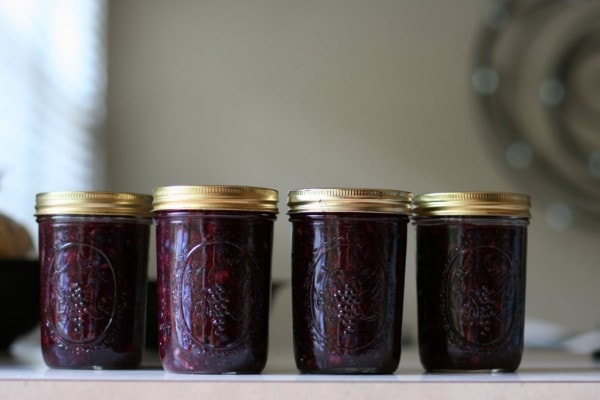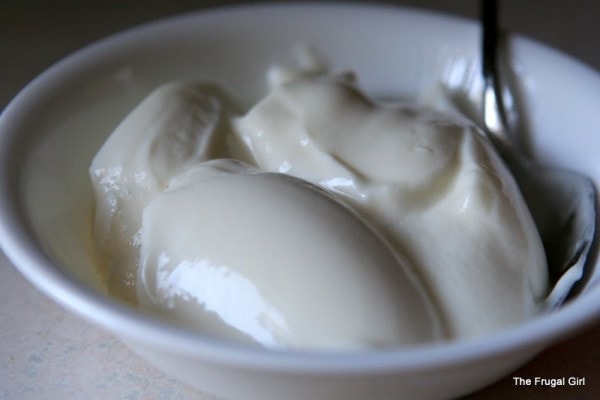I’m sorry. That is a really long title, but I couldn’t think of a more concise way to put it.
And since I’m the managing editor of my blog, I get to do rule-breaking things like publishing posts with really long titles.
It’s quite a position of power, I tell you.
Ok, so, today’s blog topic is for those of you that are sort of new to this whole cooking/baking thing. I’ve observed a phenomenon among you that may very well be hampering your efforts to feed yourselves and your family more homemade food.
Sometimes, when someone has subsisted mostly on prepared food (takeout, frozen food, mixes, etc.), seeing the ingredients that go into a recipe can be sort of alarming. It’s not so much that homemade recipes are inordinately riddled with unhealthy ingredients, it’s that the person in question is not accustomed to seeing what goes into the food they eat.
For instance, if you’ve only ever bought jam in the form of commercial jars, when you see that the recipe for homemade blueberry jam calls for 5 cups of sugar, you may very well faint. The thing is, though, the jam you’ve been buying in the jars from the store? It’s got at least that much sugar, and more than likely, the sugar is coming in the form of high fructose corn syrup.
And when you try making yogurt, the fact that the vanilla version calls for a cup of sugar may make you uncomfortable. But it’s good to bear in mind that most commercial yogurt (except for the sugarless plain stuff) has at least that much sugar (likely HFCS).
And if you were horrified at the amount of fat and sugar in the Coffee Shop Corn Muffins I posted, you should know that the ones at the coffee shop and the ones from the mix and the ones they sell in the grocery store bakery probably have as much or more fat and sugar (and the fat in the boxed mixes is usually a Crisco-like substance).
So.
The difficulty comes about when the horror at the fat, sugar, and salt content of recipes causes a person to heavily modify said recipes.
It’s not that recipes cannot be modified successfully (though you should never tinker with a jam/jelly recipe because it probably won’t set up properly), and it’s not that reducing the sugar/oil in a recipe is an awful idea.
The problem is that if you and your household are used to eating the prepared version of these foods, making a homemade, uber-healthified version is probably not going to go over super well. You’ll probably dislike the homemade version and go back to eating the store-bought stuff, and that’s not going to save you money or help you be healthier.
For instance, if you cook up a big pot of plain brown oatmeal with no sugar and try to serve it to kids who are accustomed to eating Dinosaur Egg oatmeal, they’re probably going to refuse to eat it. So take a deep breath, stir in some cinnamon, some brown sugar, and top it off with some half and half. It’ll probably still be healthier than Dinosaur Egg oatmeal, and it’ll be a heck of a lot cheaper.
And if you’re switching your fruity-sweetened-yogurt-cup-consuming family over to homemade yogurt, it’s probably not a good idea to stick bowls of plain, unsweetened yogurt in front of them. Make the vanilla version, stir in some fruit, and they’ll be much more receptive to the homemade stuff.
As a last for-instance, if your household routinely eats frozen pizzas, don’t serve up a whole-wheat, topped-with-only-vegetables pizza. Make a crust with white flour and use the toppings you normally eat (the Thin-Crust pizza recipe is a great one to try and it doesn’t even require any kneading).
Once your household is accustomed to eating homemade versions of food, you can feel a little more free to adjust the recipes gradually (you could try using 3/4 cup of sugar in your yogurt instead of 1 cup or you could try adding a bit of whole wheat flour to your pizza crust).
But really, the bottom line is that even if you don’t gradually make your homemade recipes more healthy, you’ll probably still be better off eating homemade food than prepared food. Homemade food almost always uses more natural ingredients (you can’t exactly buy high fructose corn syrup to stir into your homemade yogurt!) and homemade food can easily be made without artificial preservatives and additives. Plus, since homemade food is fresh (it doesn’t have to sit on a shelf for a long time before it’s eaten), it doesn’t require nearly as much salt as processed food does in order to taste good.
And as a bonus, homemade food usually produces less trash than processed food does.
So, if you’re just getting acquainted with your kitchen, don’t stress yourself out by trying to prepare only foods that are utterly and completely sin-free. Relax and follow the recipe.
It’s ok. 😉
(p.s. Please know that I am not trying to condemn every packaged food. In fact, I often feed my kids a box of mac n cheese from Aldi on our Friday night takeout date nights. I’m just trying to offer help and encouragement to people who are desirous of reducing their dependence on more processed foods.)
Today’s 365 post: I’m always grateful…
Joshua’s 365 post: What I’m Reading



Jen
Friday 30th of December 2011
Thank you! Thank you! I love to cook and bake and I get a lot of satisfaction from preparing meals, snacks, and even treats for my family. Some of my extended family members fall into the "no fat, artificial sugar only, processed foods camp" and their eating habits occasionally stress me out about my cooking. It feels good to know that even the added calories or salt in my homemade foods can still be better in the long run than the processed alternatives.
Sophie van Wijnen
Friday 26th of August 2011
This is sooo funny and so true! I've done my bit of baking the conventional way (using white flour, white sugar and just plain butter), but recently I tried coming up with muffins my boys could take to school. Don't ask me why but I decided they should contain less refined sugar, less saturated fats and more fibre than the muffins we bake at the weekend. So I produced muffins that were perfectly wholesome and quite... edible... but to be really really frank.... hmmm.... need I say more?
Glory Lennon
Sunday 24th of April 2011
While I don't need to hear this I know many who do, so for them I thank you. I feel bad when people needlessly stress out over stuff like this. Join the homemade-is-best club without fear! LOL
Raffaella
Friday 22nd of April 2011
I recently had a discussion on FB about food and it was depressing to see 30somethings (Italian!) women defending McDonalds because "you never know what really is in the flour and the other ingredients you buy to cook at home" and "the pollution is more dangerous anyway". It's just excuses not to cook and not to care about one's nutrition. Diet doesn't have to be perfect but can be quite healthy anyway!
ChasAnon
Thursday 21st of April 2011
I have had the same problem with switching to homemade cooking in general. I have been trying to transition from mostly takeout and restraunt dinners to 'homemade'. So in my zealous attempt to make everything from scratch i end up just getting takeout again instead of cooking at home but using some store bought ingredients like a can of pre-prepared cream of something soup for casserole. Thing is i know a homemade bechamel is doable and cheaper and healthier but it has been really discouraging to try to jump from no cooking to everything from scratch all in one fell swoop. (Especially since i work 80 hours a week) Sometimes it's so depressing..